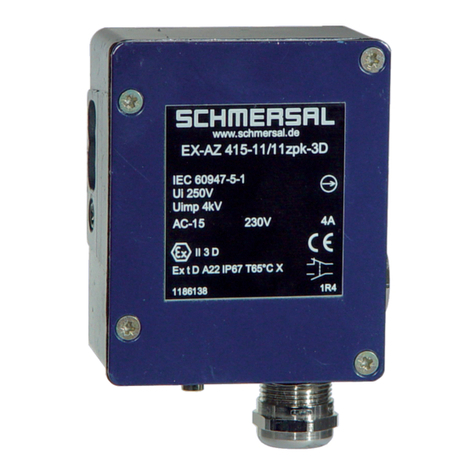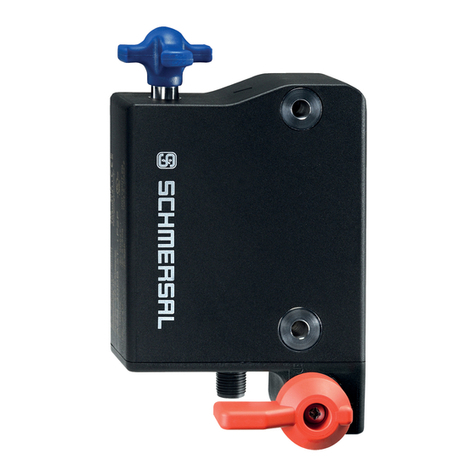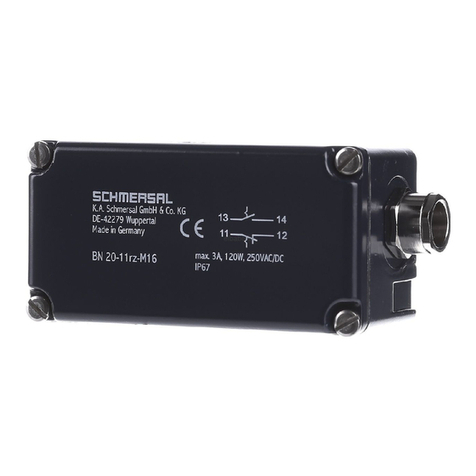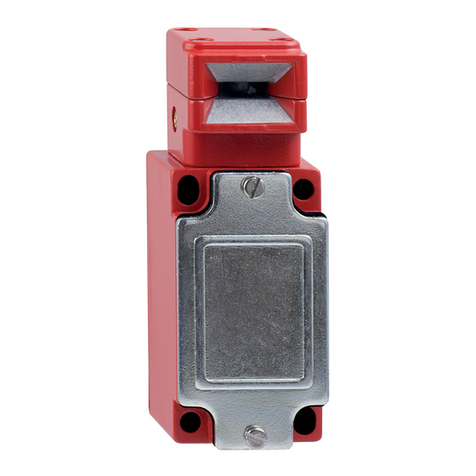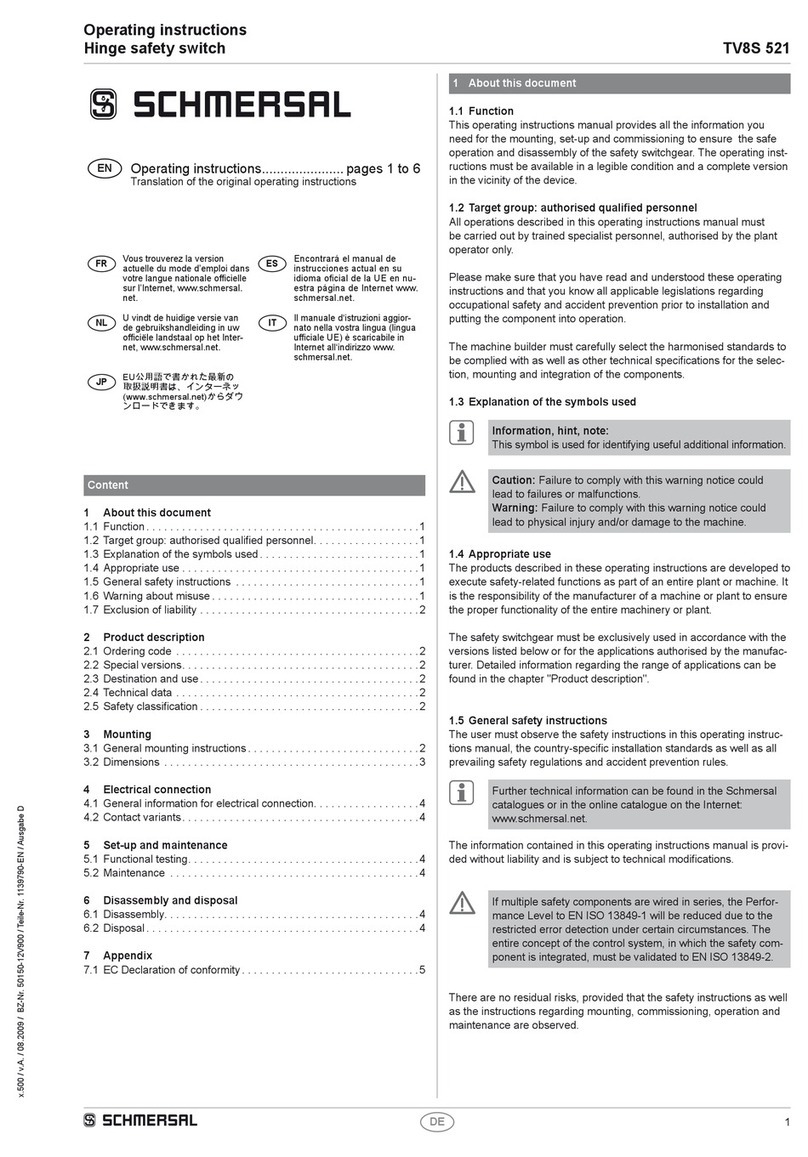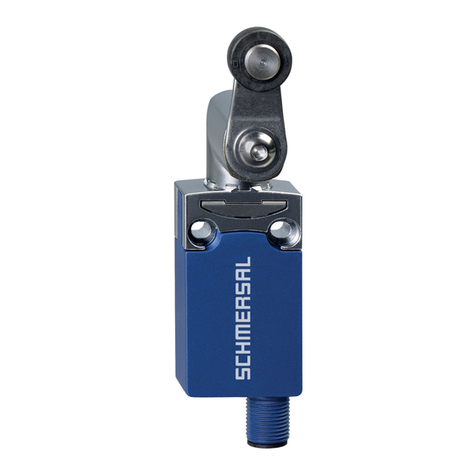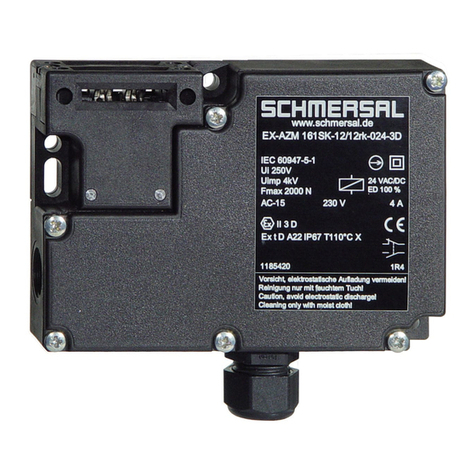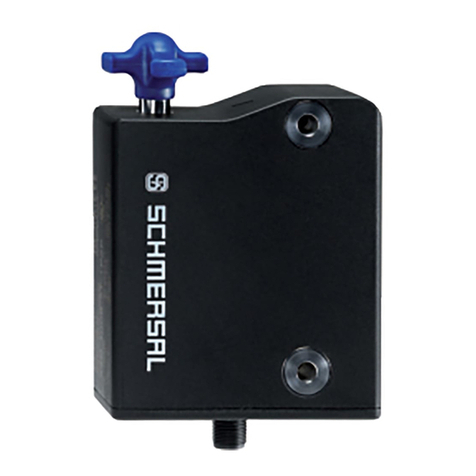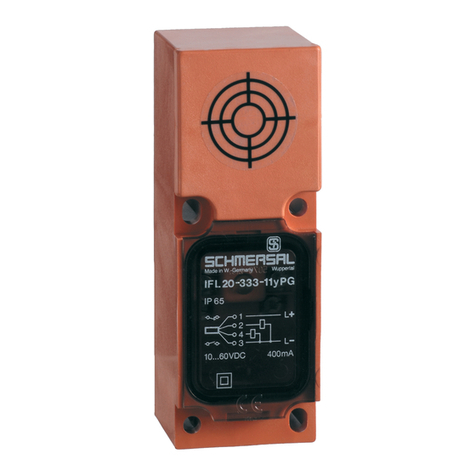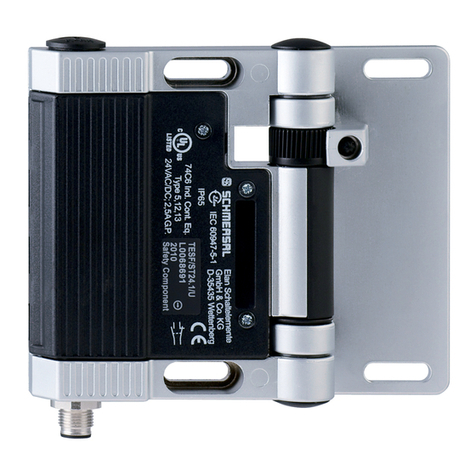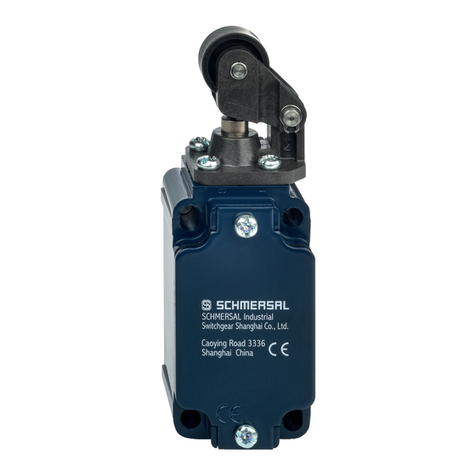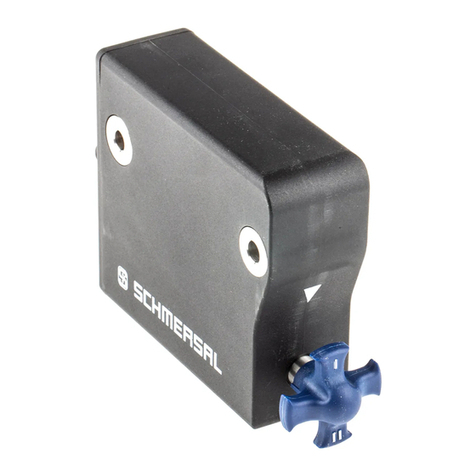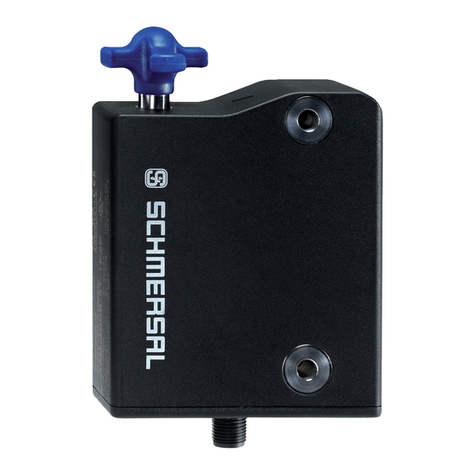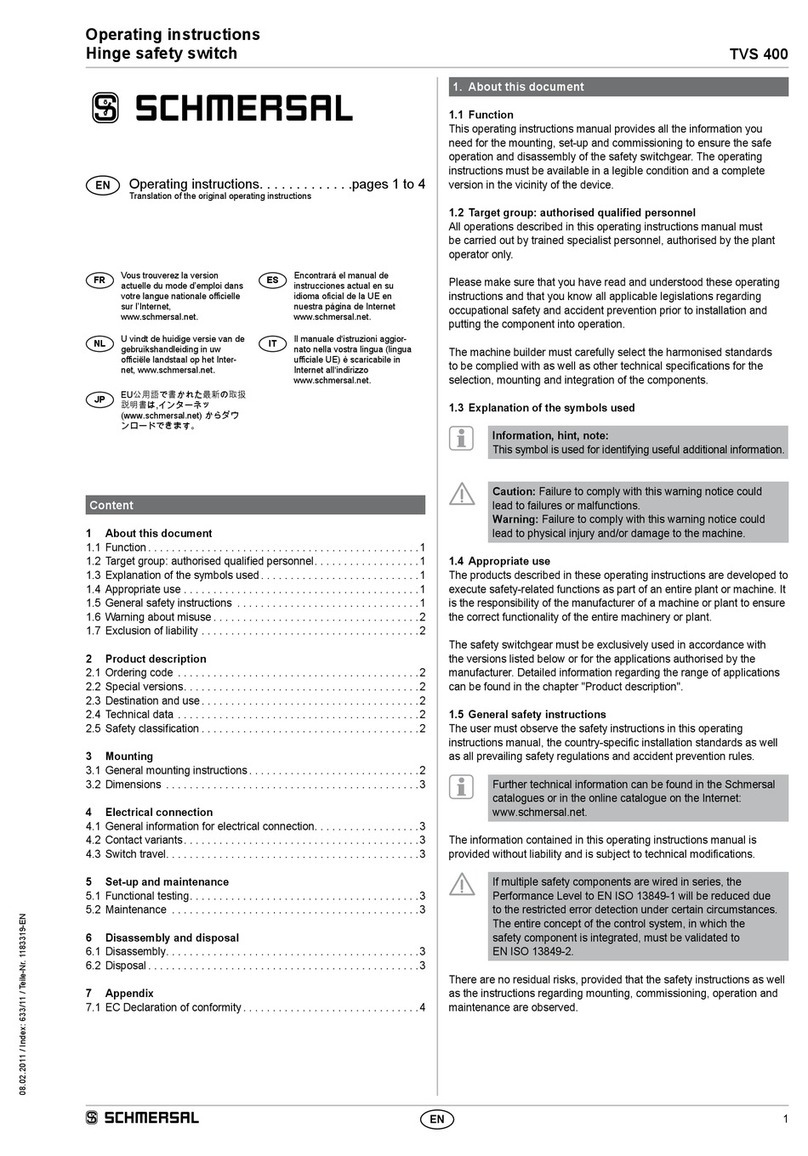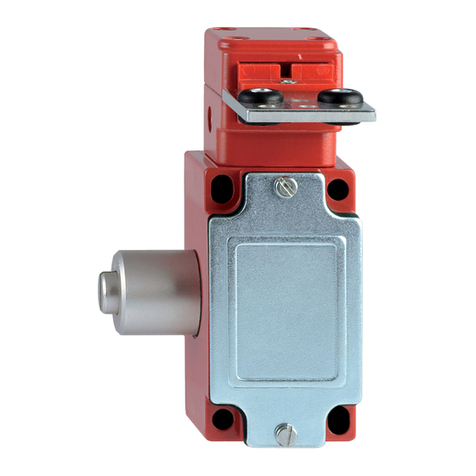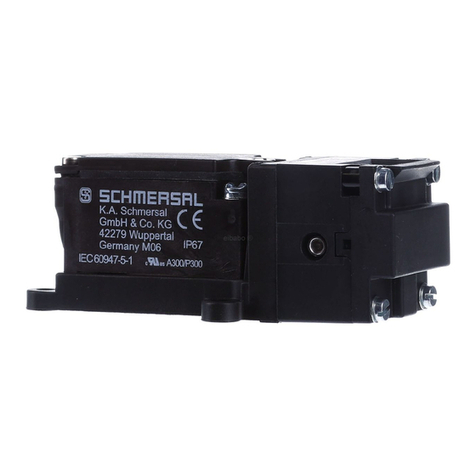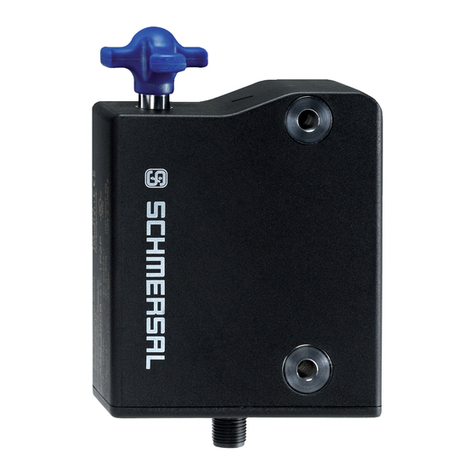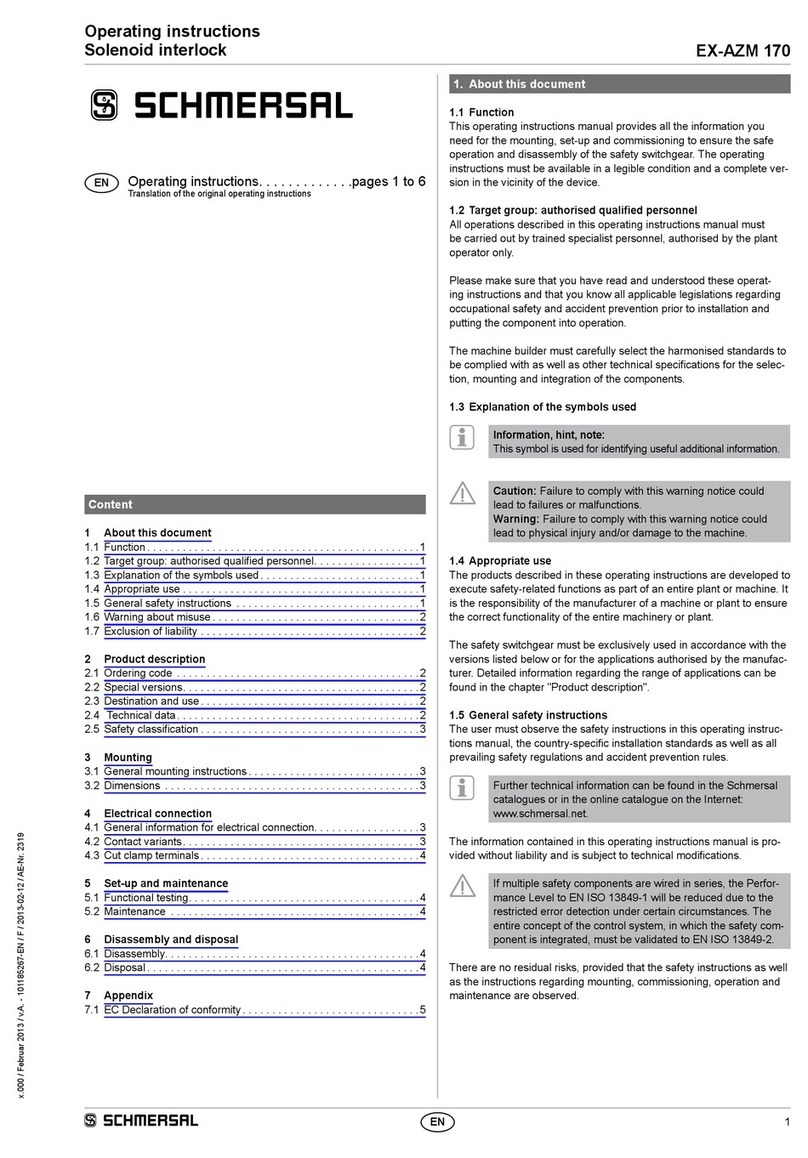
2
Operating instructions
Position switch EX-Z/T 235
EN
1.7 Exclusion of liability
We shall accept no liability for damages and malfunctions resulting from
defective mounting or failure to comply with this operating instructions
manual. The manufacturer shall accept no liability for damages
resulting from the use of unauthorised spare parts or accessories.
For safety reasons, invasive work on the device as well as arbitrary
repairs, conversions and modifications to the device are strictly
forbidden; the manufacturer shall accept no liability for damages
resulting from such invasive work, arbitrary repairs, conversions and/or
modifications to the device.
2. Product description
2.1 Ordering code
This operating instructions manual applies to the following types:
EX-➀➁ 235-➂Z➃-➄-➅-➆-3D
No. Option Description
➀
Z Snap action
A
T Slow action
A
➁
Actuator selection, refer to catalogue
➂
02 2 NC
11 1 NO / 1 NC
20 2 NO
➃
H Slow action with staggered contacts
UE Slow action with overlapping contacts
➄
1297 Enclosure with transverse slotted holes
➅
2138 Roller lever 7H for safety applications
➆
1637 Gold-plated contacts
In accordance with the Machinery Directive, the type
plate of safety components is type plate is labelled "safety
component".
Only if the information described in this operating instructions
manual are realised correctly, the safety function and
therefore the compliance with the Machinery Directive and
the Explosion Protection Directive is maintained.
2.2 Special versions
For special versions, which are not listed in the order code below 2.1,
these specifications apply accordingly, provided that they correspond to
the standard version.
2.3 Purpose
The safety switches are suitable for hinged or sliding guards, which
need to be closed in order to provide for the necessary operational
safety. The components can be used in explosion-endangered areas
of Zone 2 and 22 equipment category 3GD. The installation and
maintenance requirements to the standard series EN 60079 must
be met.
Conditions for safe operation
Due to the specific impact energy, the components must be fitted
with a protection against mechanical stresses. The specific ambient
temperature range must be observed. The user must provide for a
protection against the permanent influence of UV rays.
The user must evaluate and design the safety chain in
accordance with the relevant standards and the required
safety level.
2.4 Technical data
Designation in accordance with the ATEX Directive: LII 3GD
Designation in accordance with the standards: Ex tc IIIC T90°C Dc X,
Ex nC IIC T5 Gc X
Applied standards: EN 60947-5-1, EN 60079-0,
EN 60079-15, EN 60079-31
Design: fixings to EN 50047
Enclosure: zinc die-cast, enamel finish
Max. impact energy: 1 J
Protection class: IP67
Contact material: Silver
Contact type: change-over with double break Zb,
or 2 NC contacts, galvanically separated contact bridges
Switching system:
A
EN 60947-5-1, slow or snap action, NC contacts
with positive break
Connection: screw terminals
Cable section: min. 0.75 mm²; max. 2.5 mm²;
solid and stranded wire with conductor ferrules
Cable entry: M20 x 1.5
Rated impulse withstand voltage Uimp:6 kV
Rated insulation voltage Ui:500 V
Thermal test current Ithe:10 A
Utilisation category: AC-15 / DC-13
Rated operating voltage/
Rated operating current Ie/Ue:4 A / 230 VAC;
1 A / 24 VDC
Max. fuse rating: 6 A gG D-fuse
Required short-circuit current: 1000 A
Ambient temperature: –20 °C … + 60 °C
Mechanical life: 20 million operations
Switching frequency: max. 5000/h
Max. Actuating speed: 1 m/s
Bounce duration: slow action: < 3 ms;
snap action: in accordance with actuating speed
Switchover time: slow action: in accordance with actuating speed
Cable cross-section of the cable glands: min. Ø 7 mm;
max. Ø 12 mm
Cable glands:
L
II 2GD
Tightening torque
- Cover screws: min. 0.6 Nm
- Cable gland: min. 8 Nm
2.5 Classification
Standards: ISO 13849-1
B10D (NC contact): 20,000,000
B10D (NO contact)
at 10% ohmic contact load: 1,000,000
Mission time: 20 years
TF
D
10Dopop
op
n
(Specifications can vary depending on the application-specific
parameters hop, dop, tcycle as well as the load.)

